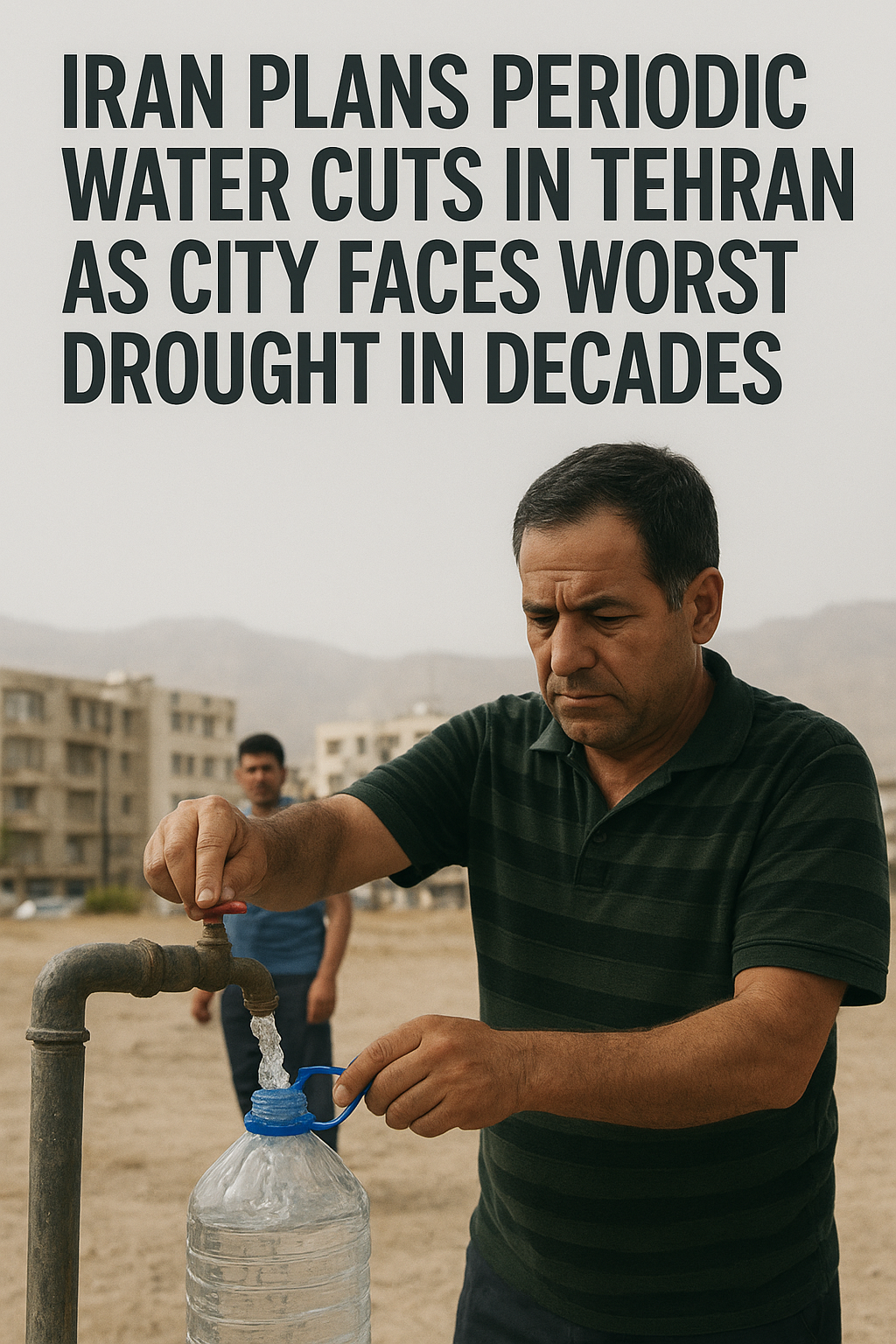As Iran grapples with one of the most severe droughts in its history, officials have announced plans to introduce periodic water cuts across Tehran, a city of over 10 million residents. The decision comes amid record-low rainfall — the lowest in a century — and rapidly depleting reservoirs that threaten the city’s water security.
According to Iran’s Energy Minister, Abbas Ali Abadi, the move, while inconvenient, is necessary to prevent waste and ensure that available resources last longer. “This will help avoid waste even though it may cause inconvenience,” he stated on national television.
The situation has become so dire that President Masoud Pezeshkian recently warned the country might need to evacuate parts of Tehran if the dry spell continues through the end of the year. No details have been provided on how such an enormous operation would unfold, but the warning underscores the urgency of the crisis.
Tehran’s Water Crisis: A Snapshot
Nestled on the southern slopes of the Alborz Mountains, Tehran’s climate depends heavily on autumn rain and winter snowfall. This year, those seasons have failed to deliver, leaving the city’s main water sources — including the Amir Kabir Dam on the Karaj River — at critical levels. The dam currently holds just 14 million cubic meters of water, down from 86 million this time last year, according to Behzad Parsa, Director General of the Tehran Water Company.
That amount, experts warn, is barely enough to sustain the city’s needs for two more weeks. State television footage has also shown alarmingly low levels in other major reservoirs across Isfahan, Tabriz, and Mashhad.
To mitigate the crisis, officials are considering night-time water cuts in several major cities. Earlier this summer, the government also declared public holidays in July and August to conserve both water and electricity, as the nation endured widespread power outages during a relentless heatwave.
The drought serves as a stark reminder of the growing global water crisis and the urgent need for sustainable environmental planning. Tehran’s story isn’t just about scarcity — it’s about adaptation, resilience, and the power of collective responsibility in facing environmental challenges that transcend borders.




